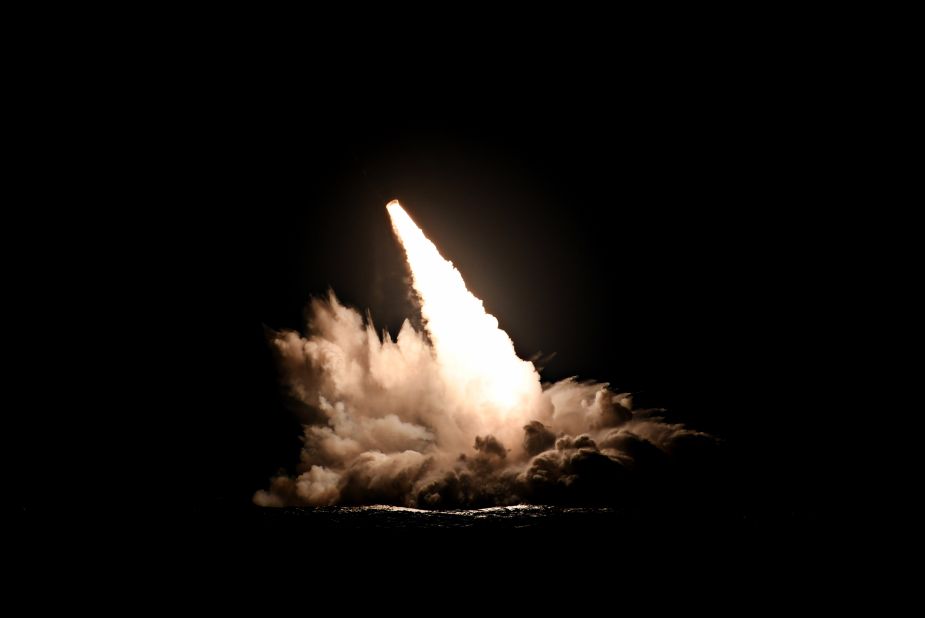Breaking news
U.S. Navy conducted missile test flights of unarmed Trident II D5 missiles from USS Nebraska submarine.
The U.S. Navy conducted four scheduled missile test flights of unarmed Trident II (D5) missiles from USS Nebraska (SSBN-739), an Ohio-class ballistic missile submarine, off the coast of Southern California this week.
 An unarmed Trident II D5 missile launches from the Ohio-class ballistic missile submarine USS Nebraska (SSBN 739) off the coast of San Diego, California, Sept. 4, 2019.(Picture source U.S. Navy)
An unarmed Trident II D5 missile launches from the Ohio-class ballistic missile submarine USS Nebraska (SSBN 739) off the coast of San Diego, California, Sept. 4, 2019.(Picture source U.S. Navy)
The first two launches took place Sept. 4, and the last two were Sept. 6. All occurred before sunrise. These test flights were part of a Commander Evaluation Test (CET) whose primary goal was to validate performance expectations of the life-extended Trident II (D5) strategic weapon system.
These launches mark 176 successful flights of the Trident II (D5) strategic weapon system. CETs and other flight tests are conducted on a recurring, scheduled basis to evaluate and ensure the continued reliability and accuracy of the system. The missile tests were not conducted in response to any ongoing world events.
The Trident II (D5) strategic weapon system, originally designed with a life span to 2024, recently underwent a life extension that will keep it operational through the late 2040s. The life-extended missiles will serve for the remaining service life of U.S Ohio-class and United Kingdom Vanguard-class SSBNs, and as the initial loadout for the U.S. Columbia-class and U.K. Dreadnought-class SSBNs.
Strategic Systems Programs is the Navy command that provides cradle-to-grave lifecycle support for the sea-based leg of the nation's nuclear triad. This includes training, systems, equipment, facilities and personnel responsible for ensuring the safety, security, and effectiveness of the nation's Submarine Launched Ballistic Missile (SLBM) Trident II (D5) strategic weapon system.
SLBMs are one leg of the nation's strategic nuclear deterrent triad that also includes the U.S. Air Force's intercontinental ballistic missiles(ICBMs) and nuclear-capable bombers. Each part of the Triad provides unique capabilities and advantages. SLBMs make up about 70 percent of the U.S.'s deployed strategic nuclear deterrent Triad. The SLBM is the most survivable, provides persistent presence and allows flexible concept of operations.

























